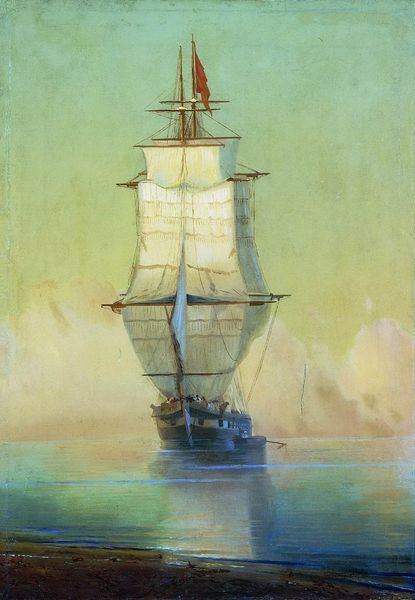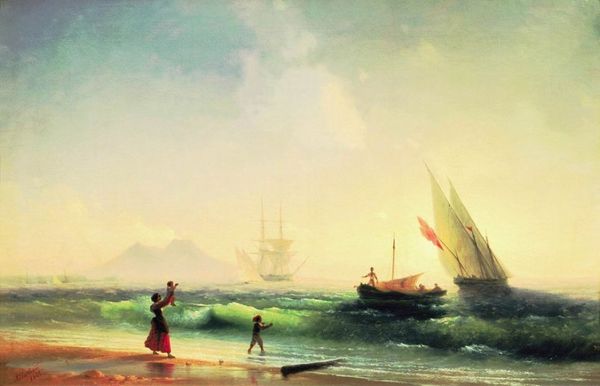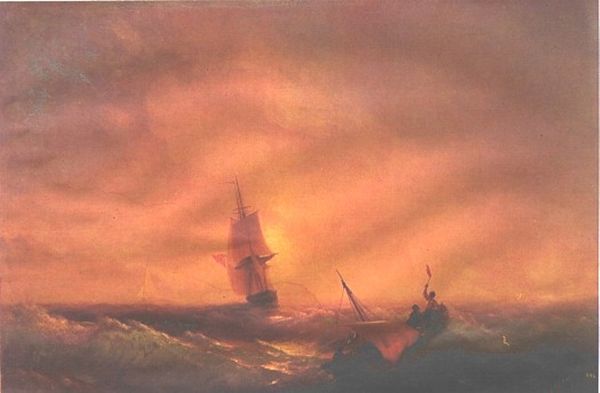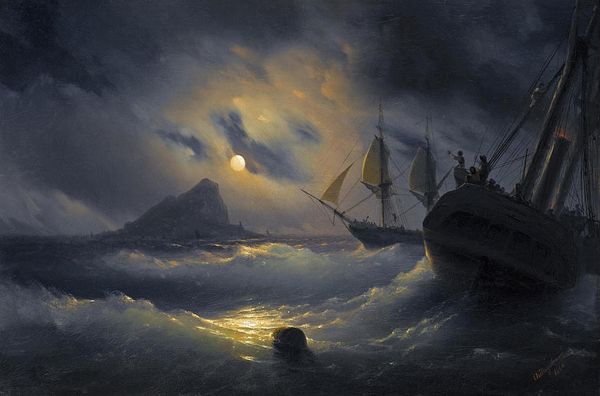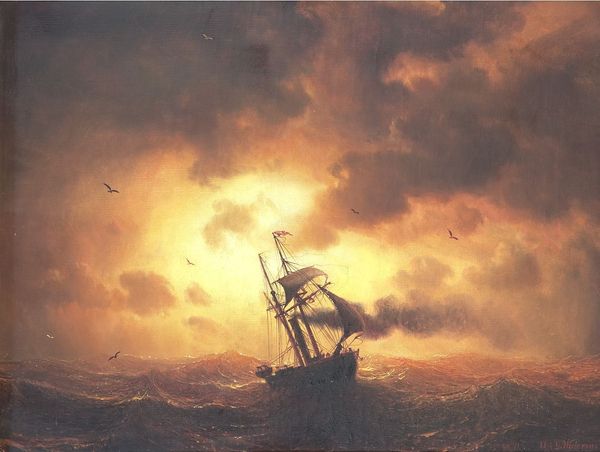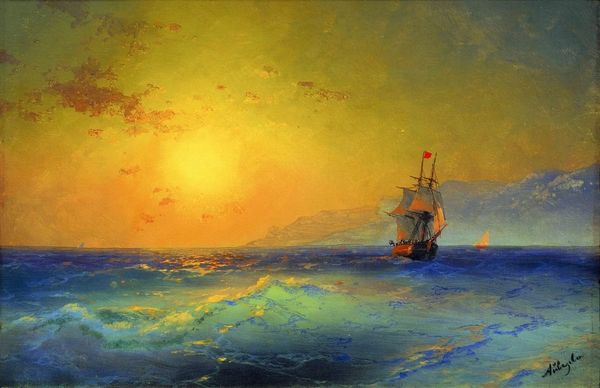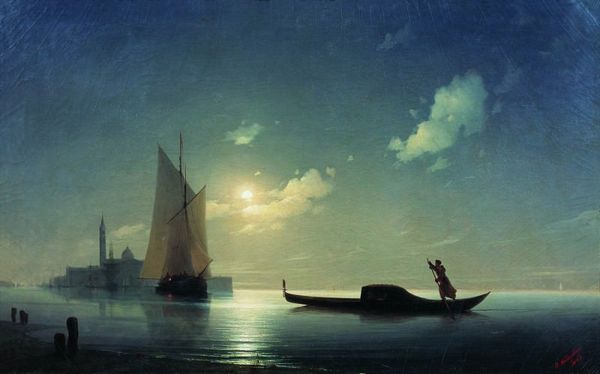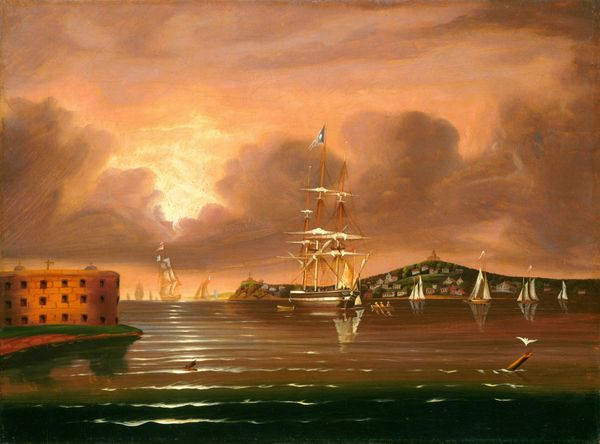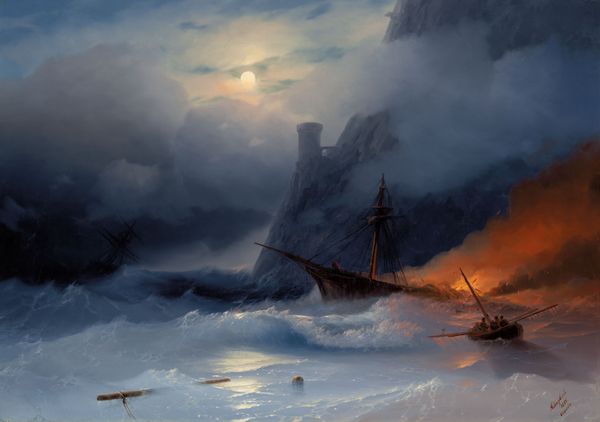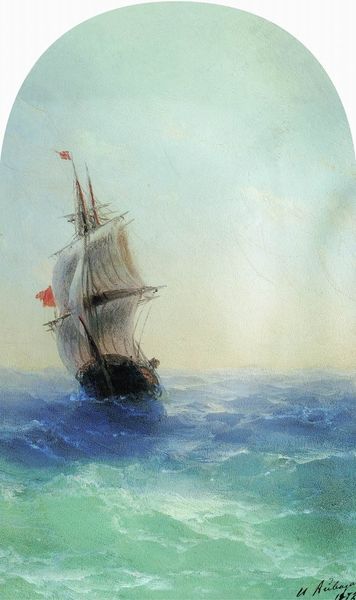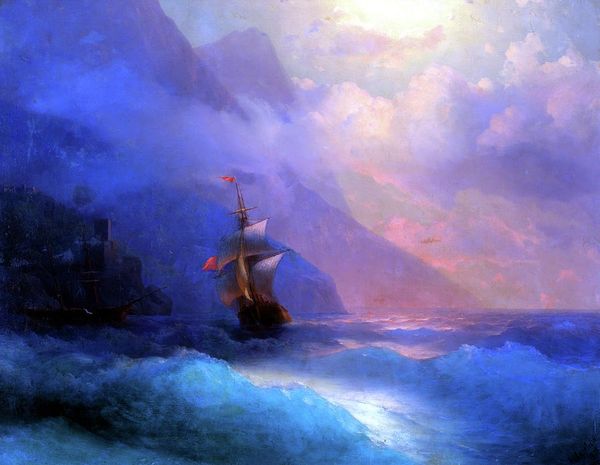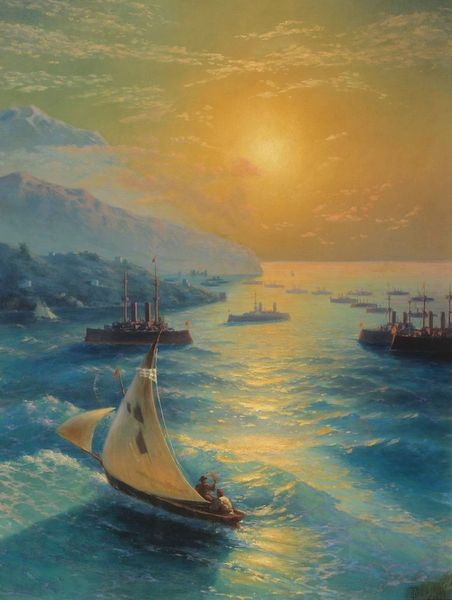
Copyright: Public domain
Ivan Konstantinovich Aivazovsky's "Sea Coast" presents a vista rendered with oil on canvas. The horizon, bathed in a soft, diffused light, meets a sea alive with textured brushstrokes, evoking both tranquility and the sublime power of nature. Aivazovsky's formal arrangement invites semiotic interpretation. The use of light and shadow does not merely depict a scene but constructs a symbolic space where the sun, as a signifier, represents enlightenment or divine presence. This contrasts with the material reality of the ships—symbols of human endeavor—that appear to navigate this luminous, almost ethereal realm. The painting’s structure, therefore, oscillates between the real and the ideal, the tangible and the transcendent. Note the subtle imbalance in the composition, with more weight given to the right side where the red flag stands out. This intentional disruption suggests a subversion of classical ideals of symmetry, hinting at the Romantic era’s fascination with the irregular and the sublime. The materiality of the paint itself, thickly applied in the waves yet thinly glazed in the sky, further underscores this duality. Aivazovsky’s sea is not merely a surface, but a dynamic interplay of color, light, and form, continuously challenging fixed interpretations.
Comments
No comments
Be the first to comment and join the conversation on the ultimate creative platform.
